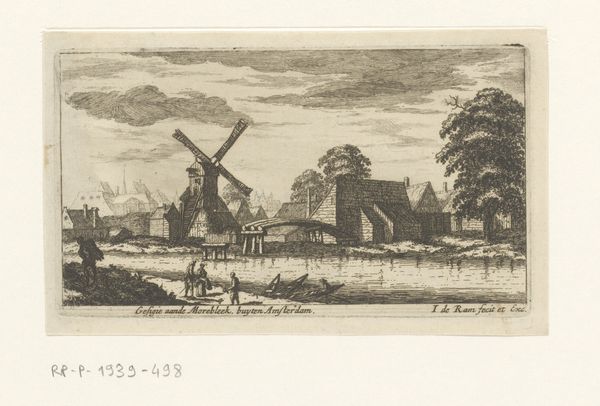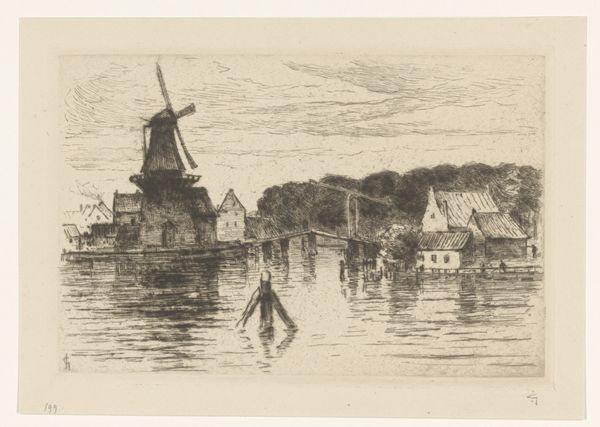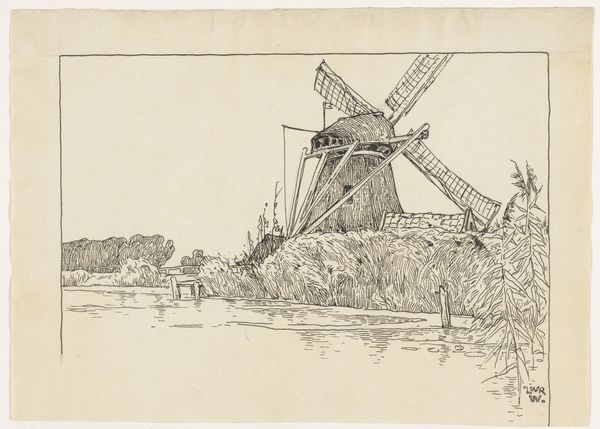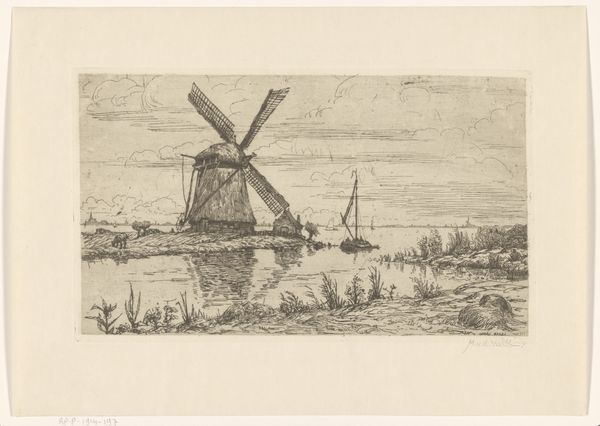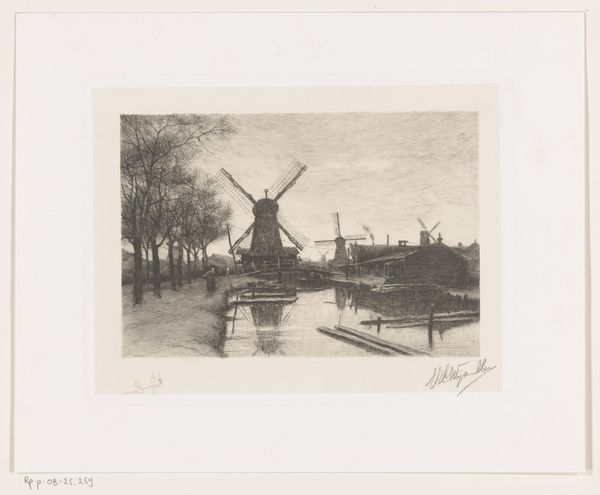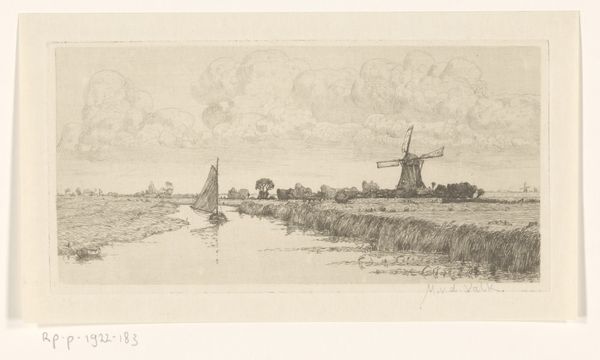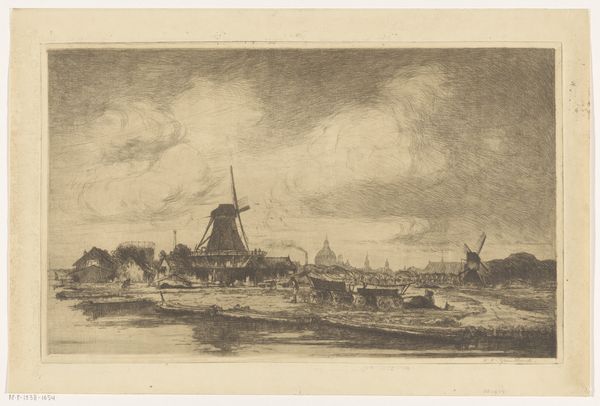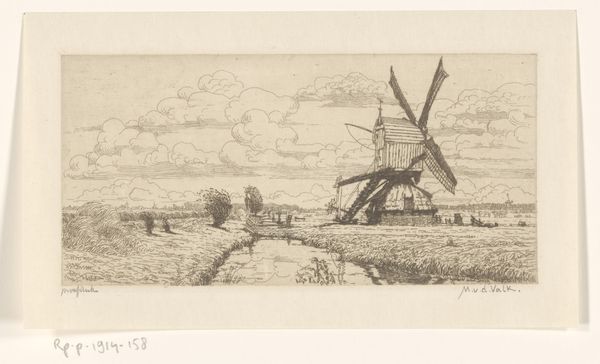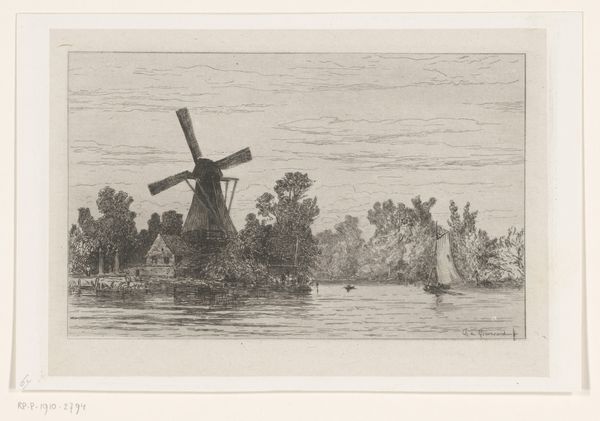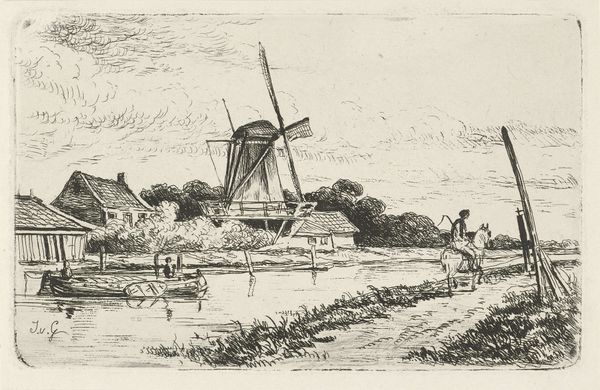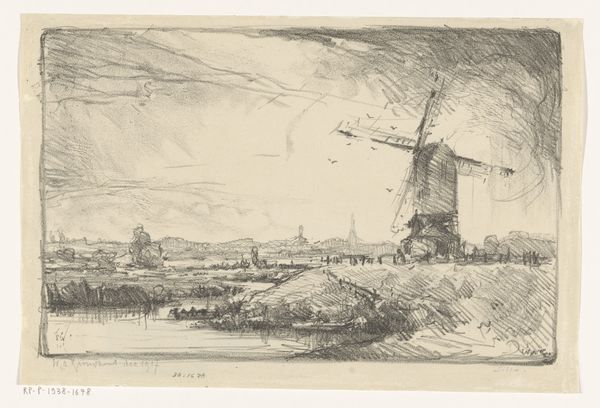
print, etching
# print
#
etching
#
landscape
#
etching
Dimensions: height 78 mm, width 130 mm
Copyright: Rijks Museum: Open Domain
Editor: This etching, "Dorpsgezicht met molen" by Johannes Löhr, was created sometime between 1892 and 1928. It gives me such a serene feeling, but something about the positioning of the windmill feels almost oppressive. What social or historical contexts can help us interpret this work? Curator: That feeling of oppression is a good starting point. How might we interpret a seemingly idyllic landscape through a critical lens? Löhr's depiction coincides with a period of significant social and economic transformation. The windmill, traditionally a symbol of Dutch prosperity and self-sufficiency, might also represent the looming threat of industrialization and the displacement of traditional labor. Do you see how the smallness of the houses is dominated by the mechanical force in the background? Editor: That's fascinating. So you're suggesting the windmill isn't just a picturesque detail but a symbol of shifting power structures? Curator: Precisely. Consider also the lack of people. Who benefits from the idyllic image and who is being erased? How might class, gender, and race influence this landscape, even in their seeming absence? Editor: It's unsettling to think about an apparently calm landscape holding so much tension. What did viewers at the time think about this piece? Curator: We can't know for sure, but by examining the social and political discourse around industrialization at the time, and asking critical questions about land ownership and the labor force, we can get closer to understanding how an image like this might have resonated – or been resisted. How do you feel seeing it now, knowing more about its potential historical context? Editor: I’ll definitely look at landscapes differently from now on. I'll also spend time reflecting on who the artist was and what message they wanted to tell, to ensure a holistic experience with the artwork. Curator: Excellent, because art holds a mirror up to power, even in something as seemingly simple as a village scene. It invites us to question whose story is being told.
Comments
No comments
Be the first to comment and join the conversation on the ultimate creative platform.

